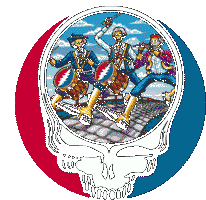All’s Fair When It Comes to the Dead

From Mondaq.com
United States: All’s Fair When It Comes to the Dead:
Second Circuit Upholds Dismissal of Copyright Infringement Action
In a recent fair use case, the U.S. Court of Appeals for the Second Circuit affirmed the district court’s grant of summary judgment in favor of the defendants, agreeing that their reproduction of copyrighted Grateful Dead images in its book, Grateful Dead: The Illustrated Trip, was "protected by the fair use exception to copyright infringement." Bill Graham Archives v. Dorling Kindersley Limited, Case No. 05-2514-cv (2nd Cir. May 9, 2005) (Restani, J.).
"This appeal concern[ed] the scope of copyright protection afford[ed] artistic concert posters reproduced in reduced size in a biography of the musical group the Grateful Dead." In October 2003, Dorling Kindersley Limited (DKL) published a 480-page coffee table biography of the Grateful Dead. Of the more than 2,000 images used to represent dates in the band’s history, seven were copyrighted images owned by the Bill Graham Archives (BGA). While DKL initially attempted to negotiate a license agreement, DKL eventually published the biography without BGA’s permission to use the images that were "originally depicted on Grateful Dead posters and tickets."
BGA brought suit against DKL, alleging copyright infringement and seeking to enjoin any further publication of the book. Both parties cross-moved for summary judgment on the issue of fair use. After applying the fair use factors (purpose and character of the use; nature of the copyrighted work; amount and substantiality of the portion used in relation to the copyrighted work as a whole; and effect of the use upon the potential market for or value of the copyrighted work), the district court "determined that DKL’s reproduction of the images was fair use and granted its motion for summary judgment." BGA appealed.
On appeal BGA challenged the lower court’s conclusion that the "balance of fair use factors weighs in favor of DKL." In particular, BGA challenged the district court’s finding with respect to the first statutory fair use factor—the purpose and character of the use—and argued that the mere placement of poster images along a timeline was insufficient to constitute transformative use. The appellate court disagreed with BGA’s "limited" interpretation of transformative use, noting that courts have frequently afforded fair use protection to biographies "as forms of historic scholarship, criticism, and comment that require incorporation of original source material for optimum treatment of their subjects."
The Second Circuit agreed with the district court that DKL’s use of the disputed images was transformative and found that DKL was not "required to discuss the artistic merits of the images to satisfy [the purpose and character] factor of fair use analysis." The court pointed to the significantly reduced size of the reproductions, the collage layout DKL employed, the fact that the images account "for less than one-fifth of one percent of the book," and the fact that DKL had not used any of the images in its commercial advertising.
As to the "nature of the copyrighted work," the court found the weight of this factor to be limited since DKL had not exploited the "expressive value of the images." Notwithstanding the fact that the images had been copies in their entirety, the Second Circuit agreed with the district court that the significantly reduced size of the images weighed in favor of fair use. Finally, the court concluded "DKL’s use does not harm the market for BGA’s sale of its copyrighted artwork," nor was there "market harm based on BGA’s hypothetical loss of license revenue."
The content of this article is intended to provide a general guide to the subject matter. Specialist advice should be sought about your specific circumstances.



0 Comments:
Post a Comment
<< Home